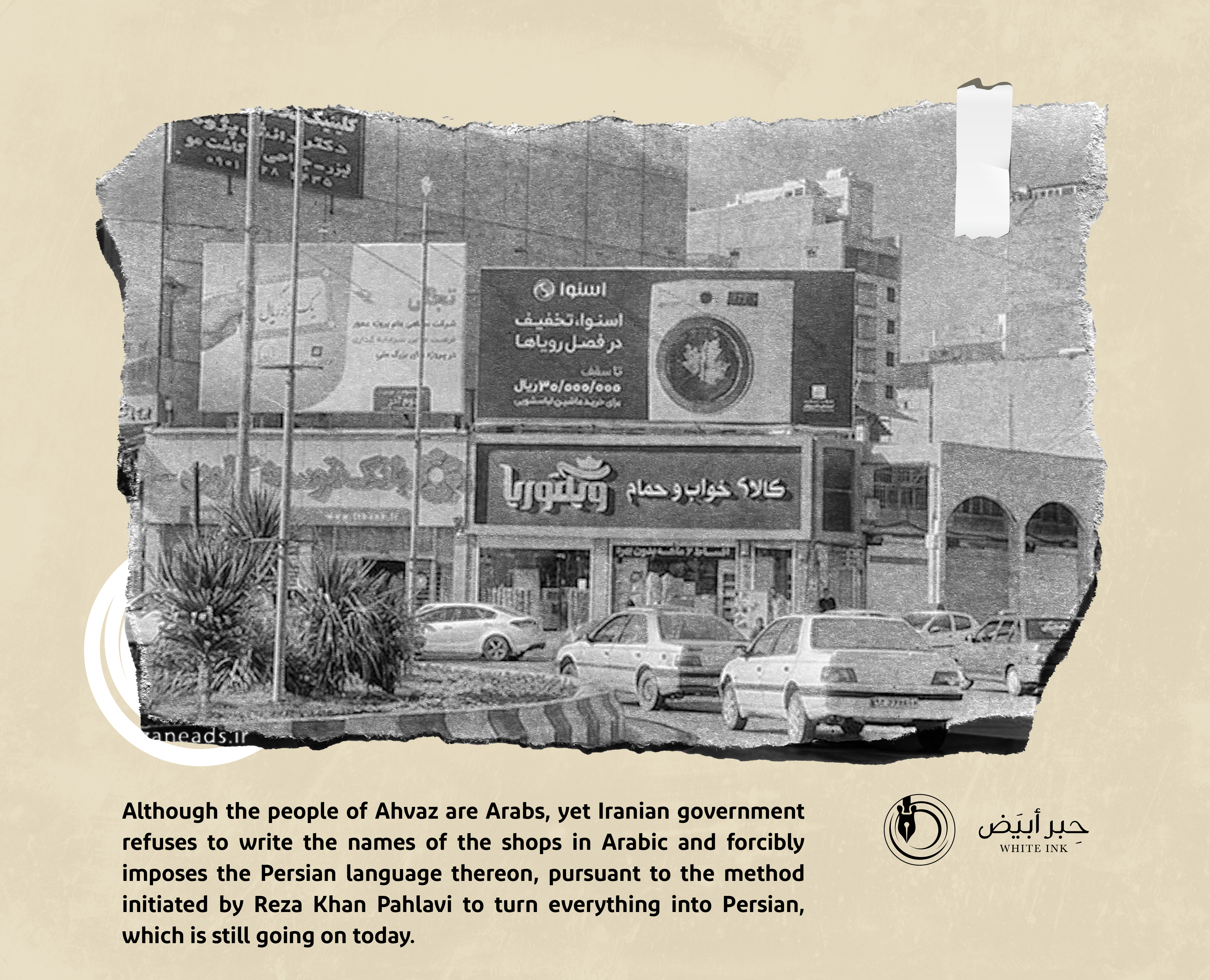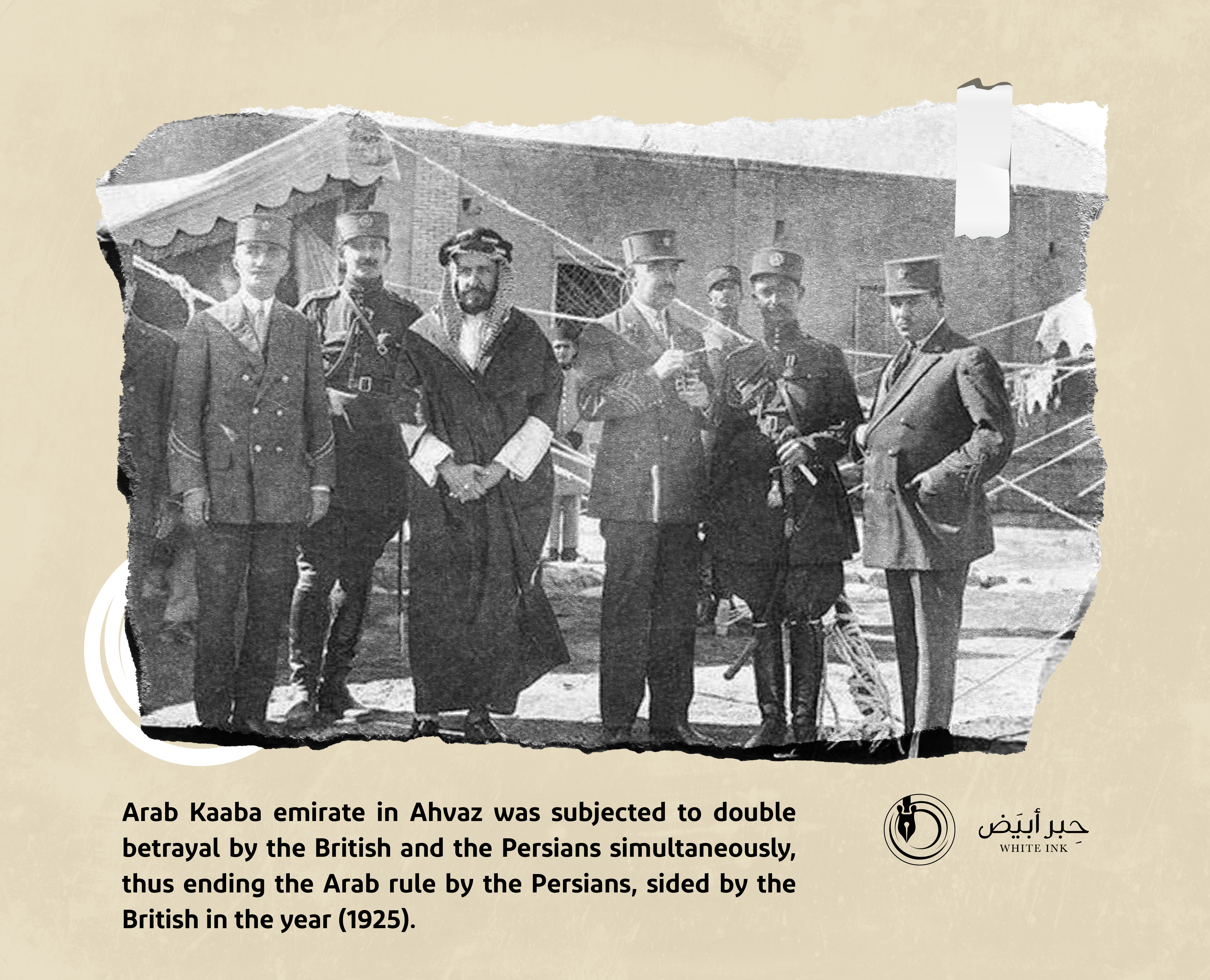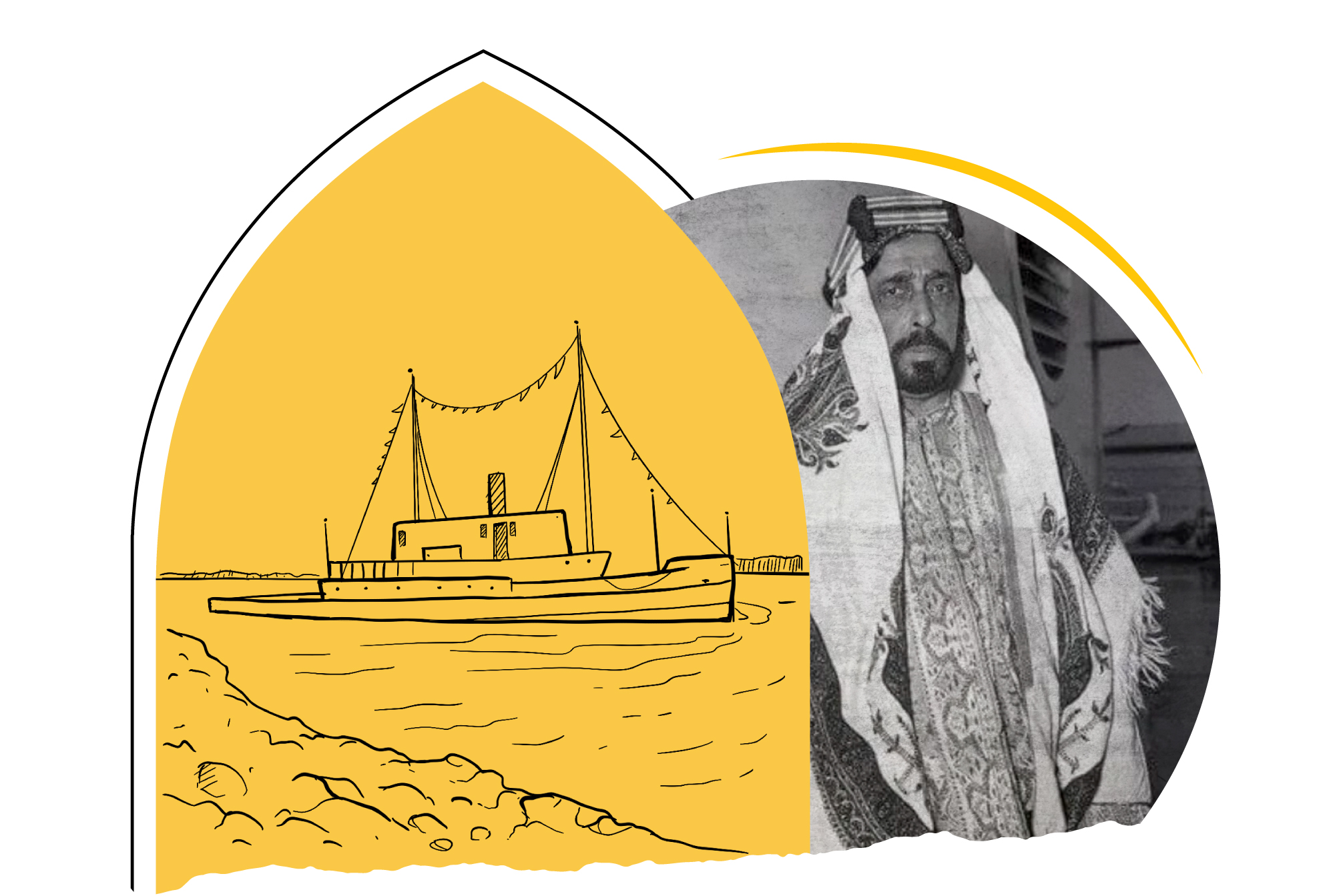
The British Facilitated Persian Occupation of Ahvaz
They Convinced Sheikh Khazal Al-Kaabi of the Deception Negotiations During Which he was Arrested in (1925)
When talking about our great Arab nation from the ocean to the Gulf, an important part of the land of our Arab nation stops us, which is Ahvaz, the vast Arab region that is regionally surrounded by Persia, Isfahan, Wasit and Basra, and includes plain lands between the heights of Lur Mountains in the east, the Arabian Gulf in the south and the outskirts of the Tigris River in the west. Ahvaz land area, that eastern and northern coasts of the Arabian Gulf, is approximately 324,000 square kilometers. Throughout its long history, Ahvaz passed through a number of Arab emirates in the eastern and northern coast regions of the Arabian Gulf, such as the Arab Musha’sha Emirate in the north and east of the Gulf. The Arab Emirate maintained its political independence for many centuries after a series of early and repeated Persian invasions.
Muhammarah emirate preserved its Arab identity for centuries before the Persian occupation, as three Arab families alternated in ruling it: Musha’sha, Al-Bou Nasser and Al-Bou-Kaseb from the well-known Bani Ka’b tribe in Ahvaz and the Arabian Peninsula. It moved in the region from Hawizeh city to Al-Dawraq city (currently Al-Falahiyya) to Muhammarah city, successively until the day of its occupation.
The Persians resorted to deception with Ahvaz, as is their habit when they failed militarily. Through agreement with the British, they resorted to deception through mediation between Arabs and Persians. British participation in the deception was when Sheikh Khazal Al-Kaabi was summoned to the deck of a British cruiser in Shatt Al-Arab near Muhammarah city, the capital, to dine and hold a ceremony to renew the signing of the Persian and British recognition of the independence of the Arab Emirate, after a long series of battles and repeated skirmishes between the armies of Iran and Muhammarah army, and to conclude a peace agreement between the warring parties. Sheikh Khazal was hesitant to go and doubted those deceitful intentions and smelled the scent of treachery and calamity. However, the representative of Shah Reza Khan and the British consul persuaded the Sheikh to come to the signing ceremony to end the conflict between both states. In fact, Britain paved the way for Reza Khan Pahlavi to set up a plot and deceive Sheikh Khazal and invited him on the back of a yacht floating on the waters of Shatt al-Arab, so that the Persians could capture the Arab prince and then occupy the region militarily on the night of the arrest on the 19th and 20th of April 1925.
Britain stepped aside after the arrival of Sheikh Khazal on the back of the cruiser and breached its pledges to the Arab Emir to protect the emirate, thus abandoned the role of mediation between Reza Khan and Sheikh Khazal. The Sheikh was arrested on the back of the cruiser by Iranian forces, after which Prince Al Kaabi took to the Iranian capital, Tehran, 1925 prisoners on 10 May. That movement was the actual beginning of the occupation of part of the Arab world, which prompted the servants of Sheikh Khazal to declare an armed revolution against the deceitful and cowardly usurper, which was known as “Thawrat Al-Ghelman”. Revolutions continued one after another against the occupier.
After Pahlavi regime faced the strong Ahvazi Arab resistance, it decided, on 1928, to disarm Ahvazi Arab people and start the Persianization policy. The first measures included changing and prohibiting Arab dress. Tehran demanded the heads of Arab clans to completely disarm and replace the Arab dress with Pahlavi garments. He also demanded them to remove their hands from all their properties and lands, so was the Hawizeh revolution in response to these unjust measures. It is worth noting that Hawizeh city is one of Ahvaz cities and is about 90 kilometers away from Muhammarah. In Hawizeh, the revolution was led by Sheikh Muhyiddin Al-Zibaq and several clans cooperated therewith. A government was formed in Hawizeh that lasted for six months, declaring separation from the Iranian occupation and continuing to exercise its rule independently. Despite the cruelty practiced by the Iranian occupation, Ahvazi people did not submit thereto, except for Britain’s cooperation with Iran in monitoring the activity of the Arab clans. The British intelligence worked favor of Pahlavi Iranian government. Six months later, the revolution was suppressed with ugliness, hatred and blood, where a large number of revolutionaries were arrested and some were executed. All Arab property was seized and terrorism, oppression, abuse, and persecution increased. Muhyiddin al-Zibaq, the leader of the revolution, was arrested and imprisoned in a private house until he died. After the end of Hawizeh revolution, the Iranian authorities continued to oppress, terrorize, abuse and imprison free people. Many Arabs were deported to northern Iran and the Persians settlers inhabited the Arab lands. Some Ahvazis fled to Iraq, Kuwait, and other Gulf countries.
British intelligence was a major assistant to Iran's control of Ahvaz and thwarting its revolutions.

Iran has harassed the Arabs in their sources of livelihood, cutting off water from their farms, seizing their lands and distributing them to the Persian immigrants, whom it settled in the colonies it established for them, provided them with all the means for their livelihood at the expense of the Arab Ahvazi people. This brutal oppression continues to this day.


- Ibrahim Al-Obeidi, Ahvaz… A Stolen Arab Land (Baghdad: Dar Al-Hurriya for Printing, 1980).
- Hassan Al-Jaff, Encyclopedia of Iran’s Political History (Beirut: Arab House Encyclopedias, 2008).
- Khaled Al-Masalmeh, Arab Ahvaz Occupied Territories, 2nd Edition (Germany: Center for German-Arab Studies, 2008).
- Salih al-Ali, Ahvaz in Early Islamic Eras (Baghdad: Elam Studies Center, n.d.).
- Ali Al-Helou, Ahvaz Tribes and Families (Najaf: Al-Ghari Modern Press, 1970).
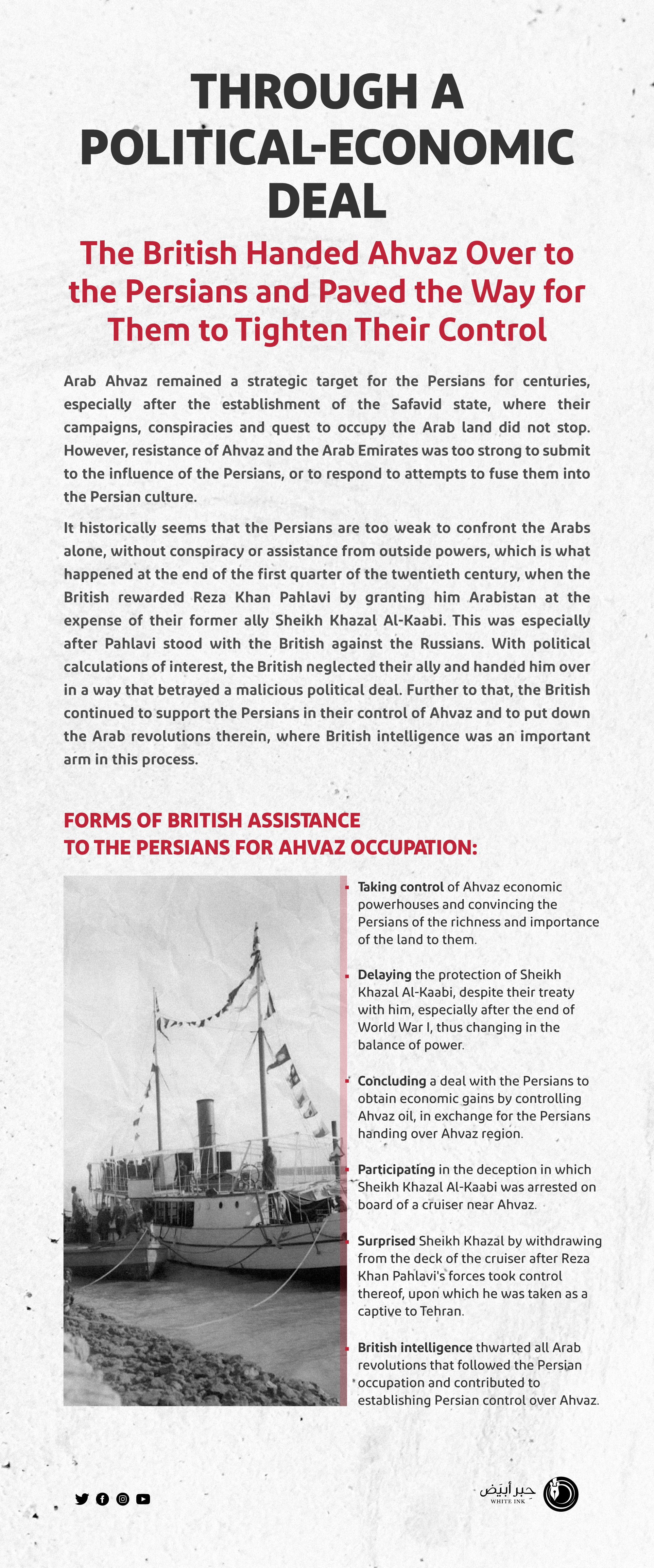
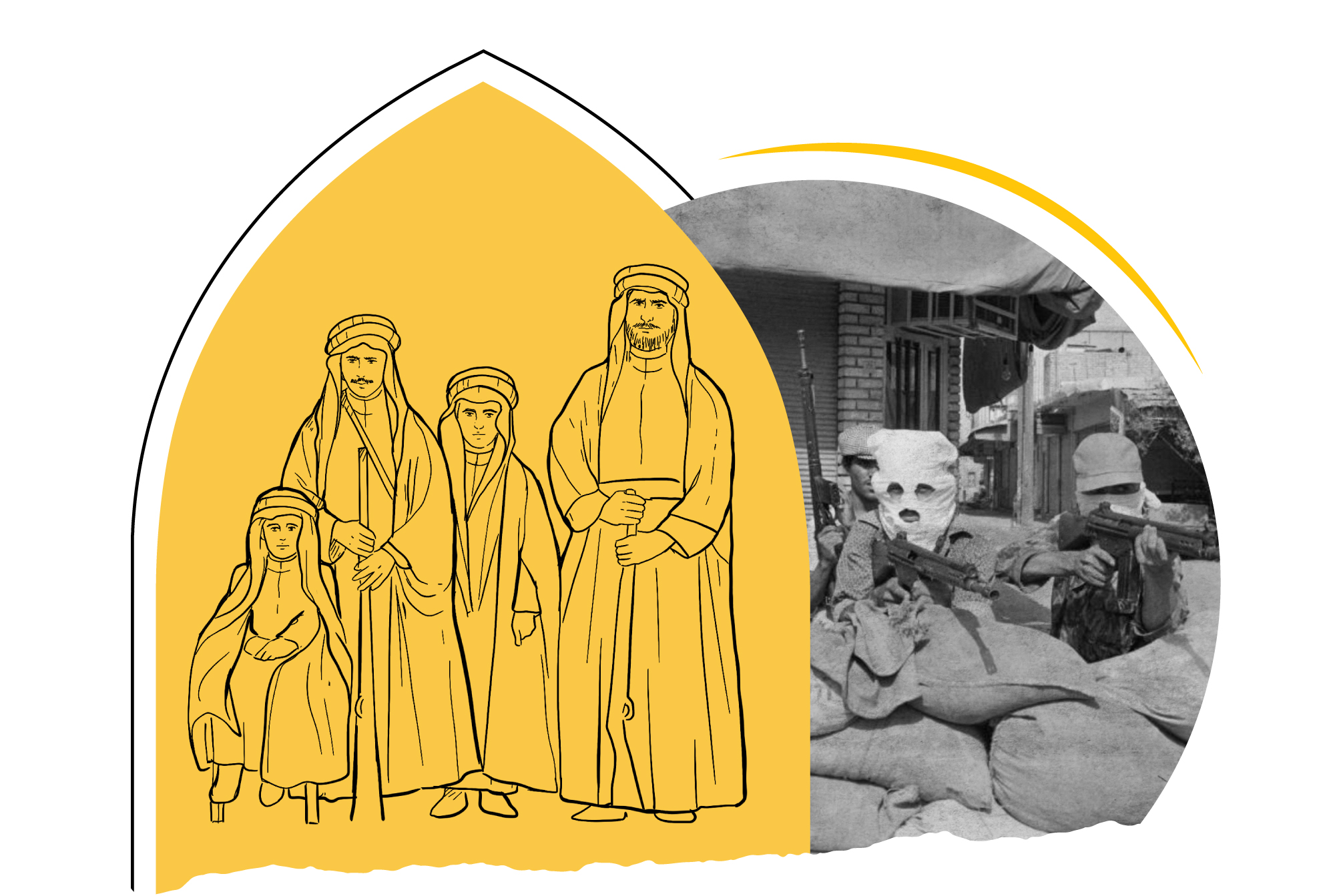
Iran's Policy with Ahvazi Arabs
Suppression, Persecution and Denial of Social and Service Rights
Persian general, Ahmad Madani, who was appointed by Khomeini as governor of Ahvaz, said: “Arabs are rioting and I will drink from their blood if they continue to press for demands”. This is how Iran’s generals deal with Ahvazi Arabs in the modern era. This was not a threat, but rather a practical application to eradicate the Ahvazis and exterminate them ethnically. General Ahmed Madani spared no effort in suppressing the Ahvazis and it was on 30 May 1979 when he committed the “Black Wednesday” massacre in Muhammarah city, in which he exterminated hundreds of Ahvazis, women and children, in just three days, only for the guilt of being Arabs longing to live in their land safely.
What Madani did was not out of that Persian repression against Arab Ahvazis. Rather, it is a return to historical Persian politics with the Arabs. We will find similar events carried out by Ismail Al-Safavi, as historical records point out that he used a policy of intellectual terrorism against the Ahvazis, in a reprehensible sectarian manner. Persian culture relies on eradicating culture and knowledge from the hearts of Ahvazis to keep them subject to occupation with Persian swords on their necks.
What the Persians practiced with the Ahvazi Arabs was a very harsh and strict policy, based on the eliminating the Arabic language and replacing it with Persian language, as the Persian authorities occupying Ahvaz prevented teaching Arabic language or using it orally or in writing.
Despite the Persian racial discrimination and hatred against the Arabs, their unwillingness to integrate them into the local society and viewing them as appendages of the population on the Iranian map, yet they attempted to Persinalize them to be, even if they spoke Persian, an outcast minority without a reliable identity, preceded by the Persians, the Azeris, the Uzbeks and the Baluchis, where the Arabs were placed at the bottom of the list of races that the Persians rule with iron fist.
Ahvazis expressed the state of oppression they have been subjected to for about 100 years until today in various forms, including poetry, which has become the blatant voice of the Ahvazis in the face of Persian occupation, which recorded the forms of repression, persecution and deprivation of social and service rights that Ahvazi Arabs suffer from. Therefore, Ahvazi poets had a role in exposing the policy of Persian mullahs.
Also, despite the attempts of Ahvazi poets, yet, through time, generations of Arabs were isolated from their heritage and identity. Yusef Al-Sarkhi expressed that by saying: “The eloquent Arabic literature, despite its antiquity and the presence of Ahvazi giants in language and literature, such as Abu Al-Hilal Al-Askari, Ali bin Khalaf Al-Mashasha’i, Abu Maatouq Al-Huwaizi, etc., yet Ahvazi people’s estrangement from its history and natural cultural extension, due to the generalization of Persian language in teaching in Iran, as well as the Persian culture and literature, with the prohibition of Arabic language and its circulation, all rendered Ahvazi people live in a state of complete cognitive disconnection from their previous history and achievements in literature and language.
Iran has worked to prevent the use and circulation of Arabic language, which contributed to the state of isolation drawn by the Persians for the Ahvazi Arabs, where Arabic language has become a crime in the eyes of the Iranian government and whoever deals in Arabic is treated as a real enemy. Al-Sarkhi says about that: “When Ahvazi writer or poet writes in Arabic, he is then considered a political opponent and may be detained and accused of being involved in political and military issues that may lead him to the gallows, only because he writes in an unofficial language suspected by Iranian Persian regime”.
Persians dealt with Arab poets as if they were real criminals and whoever speaks Arabic is classified as an enemy of the Iranian government.

There was nothing left for Ahvazi Arabs except to preserve and circulate poetry, as it is their cultural treasury, after the Iranian regime continued to try to eradicate and uproot their culture and strip them of their Arab heritage and civilization. Poet Muhammad Amer Zuwaidat explained the position of Arab poetry in Ahvazi heritage, saying: “Those who resisted over the past ninety years, carried the banner of fighting the occupation with words, penetrated all barriers and called for the necessity of expelling the occupiers from the land, were the resisting Ahvazi poets. They continued, with all courage, to fire shells of fiery words in the face of Persian occupation of Ahvaz, denouncing the Persian revenge and retaliation practices against everything that is Arab”. He emphasized that the class most subjected to torture, displacement, arrest and assassinations are the poets, saying: “There is an army of young poets in Ahvaz who have taken it upon themselves to spread national and patriotic awareness in Ahvazi street, opposing the inflammatory sectarian rhetoric spread by Iran in the region”.
This is evident in Ahvazis’ describing their tragedy with the racist, extremist Persian element, which practiced a scorched-earth policy against the occupied Arab state and people of Ahvaz. It was not content with occupation, but rather practiced the most heinous acts of cultural assassination and civilizational razing on the ground, just like any occupier imbued with prior enmity and hatred.
Researchers Baqer Al-Sarraf and Adel Al-Suwaidi say in their book, Is the Gulf Arab or Persian and Other Ahvazi Issues, “Ahvaz Emirate enjoyed great political independence, with its own ruler and foreign political representation, despite the circumstances before or after the First World War, where many Gulf states were completely subject to direct British rule or bound by imposed treaties that aimed at reducing their future political movement and determining the directions of their path in light of the colonial states’ political strategic requirements. However, that vital Arab region, Ahvaz, which is inhabited by about ten million Ahvazi Arab citizens, suffers today even more than in the entire historical past, from a Persian political vision that is based on a conscious political and racist practice in terms of political goal and results, based on administrative settlement movements of the land and occupation of social composition and national geography, as well as displacement movements of the indigenous population, on the one hand, and settlement of the Persian race, confiscating the land, changing its national nature, dredging the rivers, transporting water to Sistan, Rafsanjan and Isfahan and seizing all material goods available on and inside the Arab Ahvazi land, without allocating any percentage of its cash income to spend on its reconstruction or contribute to its human progress. This is in addition to removing Arabic language so as not to be used by all Arab children, preventing them from studying in their mother tongue. They also killed Arab citizens under the pretext of being terrorists or Salafis who violate the Iranian constitution that is based on sectarian vision”.
Another goal other than expansion and search for financial sources is hidden behind the Persian-Iranian occupation of the Arab Ahvazis, which is revenge against the Arab element that defeated the Persians in Qadissiyah. Therefore, Persian colonization of Ahvazi dealt with the Ahvazis as if they were permanent enemies, who must pay the price for what their ancestors did 1400 years ago.
Persian occupation of Ahvaz, with international complicity, actually came to destroy a cultural heritage, where the culture of the Iranian regime was forcibly imposed thereon, subjecting it to their aggressive policies and goals, while destroying Arab customs and traditions and attempting to change their language and the names of their cities and villages to Persian names. They aimed to creating a rift between the coming generations of Ahvazi Arabs and their knowledge heritage and roots, disengaging them from their land, on which they lived for more than 2000 years. Ahvazi Arabs have actually lived on their land much more than the occupied Persians.


- Baqer Al-Sarraf and Adel Al-Suwaidi, Is the Gulf Arabic or Persian and other Ahvazi Issues (Cairo: Gazerat Al-Ward Library, 2012).
- Afia Al-Fifi, Ahvazi poetry… A revolution Confronting Persian Oppression and a Cry in the Ears of the world (Al-Riyadh newspaper, 6 August 2018).
- Amer Al-Dulaimi, Iranian Occupation of the Arab Region of Ahvaz (Amman: Academicians Publishing House, 2020).
- Ali Al-Helou, Ahvaz Revolutions and Organizations 1914-1966 AD (Najaf: Al-Ghari Modern Press, 1970).
- Ali Nima Al-Helou, Ahvaz in Its Historical Roles (Baghdad: Dar Al-Basr, 1967).
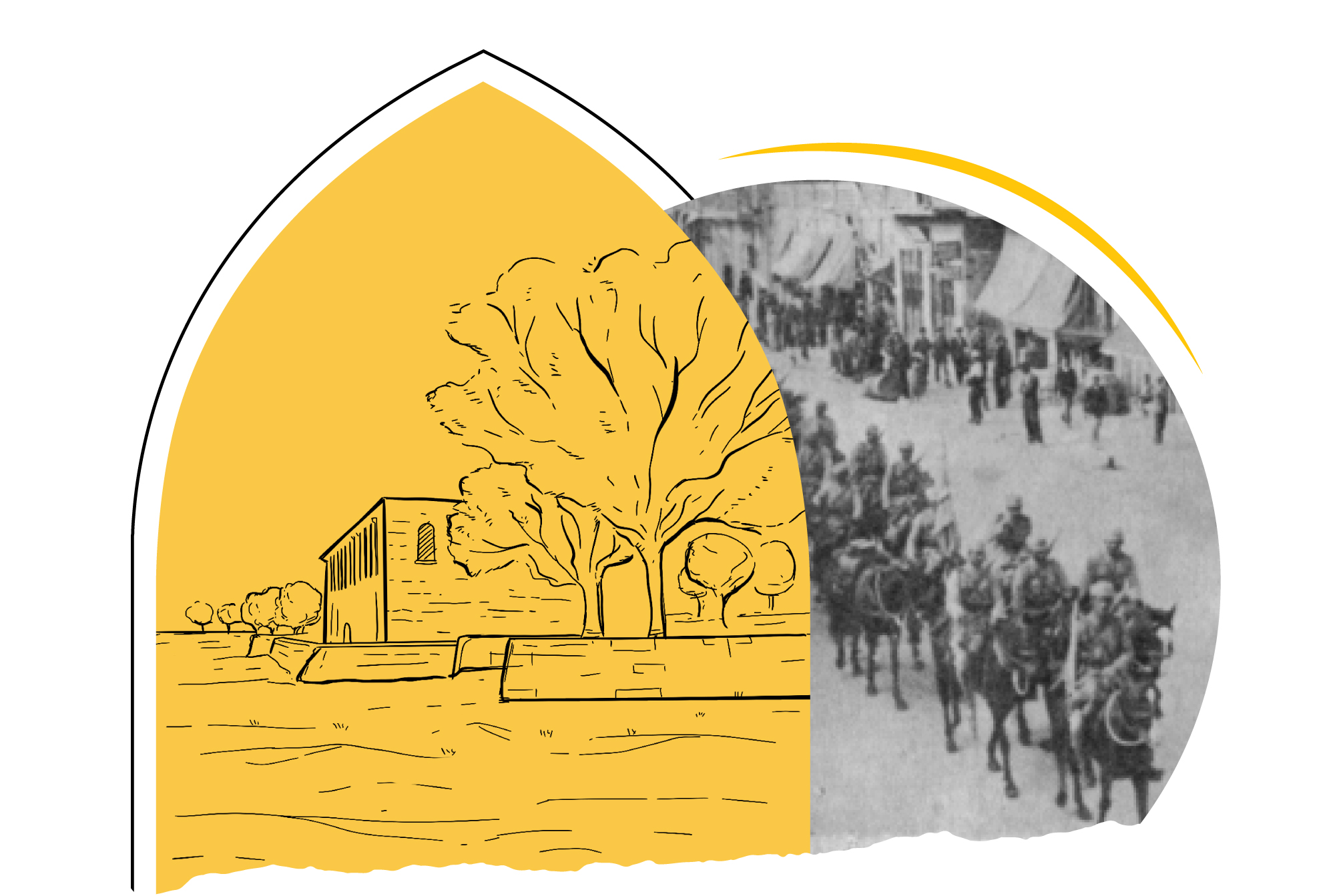
Targeting Arab Identity
Ahvazis are still steadfast in the face of Persian oppression and subjugation
Occupation of Arabistan marked the end of successive tracks of Western and Persian attempts to subjugate that Arab state, within a strategic environment and an objective alliance that made rendered the occupation of the region and the sharing of influence as preludes to a strategic alliance which repercussions we are still experiencing to dare.
It can be said that occupation of Ahvaz did not constitute an exception to other patterns of occupation witnessed by a group of rich regions, where colonial states resorted to the so-called “Settler Colonialism”, which is the most dangerous type of colonialism, as it strives to eliminate the identity and ethnic component, thus diminishing the main character of the colonized peoples.
Faced by the resistance of the Arab Ahvazi Arabs to Persian colonialism, which began in 1925, and their numerous liberation attempts, the Persians enacted a set of laws that aimed at breaking the link between Ahvazi Arabs and their Arab national identity, eliminating their power and resistance. Among the first demands imposed by Pahlavi Iran on the Arab tribes, insisting on their full and strict implementation:
1- Full clans’ disarmament.
2- Replacing the Arab dress with Pahlavi clothes.
3- Lifting up the hands of all clan leaders off their properties and lands.
The measures taken by the Persian colonialists are part of what is called “the method of psychological warfare, by insulting and despising every Arab aspect and appearance, forcing Arabs to adopt imposed Persian dress, traditions and language”. Attempts to obliterate the Arab identity did not stop at that point, as the Persians deliberately “changed the Arabic names of cities, villages, and regions to Persian names; hence, Al-Nasiriyah was replaced by Ahvaz, Muhammarah became Khormasheh and Ahvaz became Khuzestan”.
Iranian regime’s fear of Arab revolution in Ahvaz was a motive to implement a tyrannical approach that is crueler than the approach actually applied thereby to its own people. Persians used repressive and police methods, destroyed all manifestations of Arab culture, burned the main books and confiscated some others thereof, and kept them in the capital, Tehran.
Sustainability of the Persian settlement occupation of Ahvaz and the failure of all the revolutions that tried hard to emancipate from them are due to a group of factors, foremost of which are tactical and strategic mistakes that are represented in the fact that all the revolutions carried out by Arab Ahvazis, such as: Ghelman Revolution (Revolution of the Boys), Juwaiza, Sheikh Haidar, Al-Fajriyah, etc.. all failed because it took a special centralized form rather than an Arab dimension, in addition to the penetration in which the Persians made in all ranks of Arab revolutions in Ahvaz, not to mention Iranian deception and maneuvering factor, as “Iranian military authorities often resort to prevarication and deception, claiming that they will provide the Arabs of the region with gains and some rights whenever they see that the revolution is strong and that its survival will lead to its extension to other regions”. Yet none of the Persian promises were ever realized.
Since the first moments of the occupation of Ahvaz, Ahvazi people suffering has not ended because the Arab community refuses to dissolve in the oppressive Persian culture, especially since Arabistan relies on a deep-rooted political historical legacy, independent of the Persians. That is why the issue of that region shall remain essential in the Arab political agenda, especially with the state of Persian ethnic domination over Ahvazi Arabs, who are still fighting to preserve their Arab identity, which has remained steadfast for nearly a century to date.
Racist dimensions are present in every Persian interaction with everything that is Arab.



- Ibrahim Al-Obeidi, Ahvaz… A Stolen Arab Land (Baghdad: Dar Al-Hurriya for Printing, 1980).
- Hassan Al-Jaff, Encyclopedia of Iran’s Political History (Beirut: Arab House Encyclopedias, 2008).
- Ali Al-Helou, Ahvaz Tribes and Families (Najaf: Al-Ghari Modern Press, 1970).
- Ali Nima Al-Helou, Ahvaz in Its Historical Roles (Baghdad: Dar Al-Basr, 1967).




